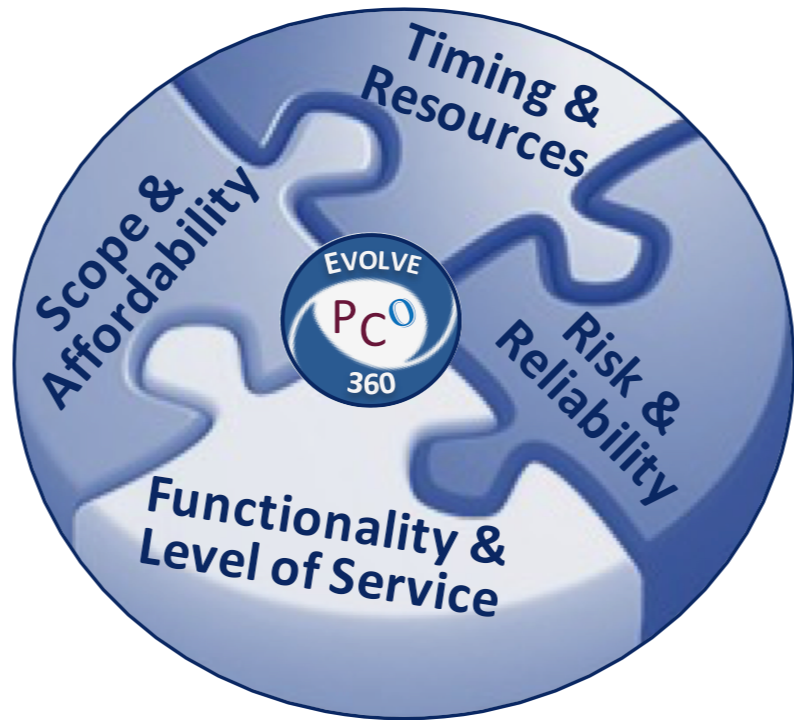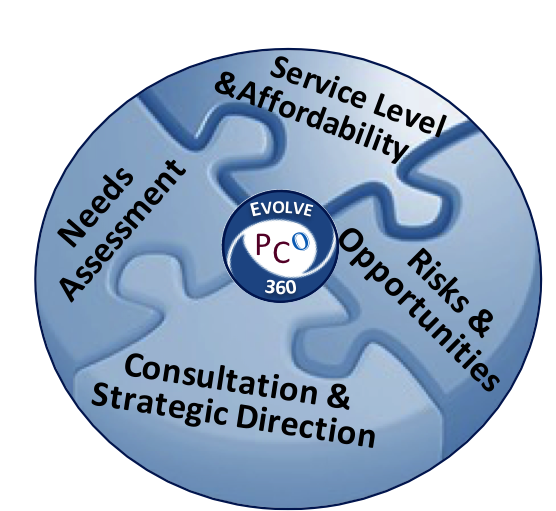INITIATING CHANGE
Despite the mass of available processes, tools and techniques, many programs and major projects fail to produce their expected performances. This can be due to a combination of ill-defined expectations, flawed planning and absence of appropriate controls, along with shifting managerial direction and waning stakeholder support.
Key Factors Within Organizations:

Organizations may exhibit difficulties such as:
Multiple business goals - all being top priority
Benefits yielded are much less than as forecast in the original business case
Programs and projects that are delivered late, over-budget and not in line with the current business needs
Reluctance to cancel non-performing programs or projects
Over-abundance or misalignment of tools and techniques
Over-stretched resources; consequent poor performance
Organizational and “cultural” barriers
Lack of innovation and drive (just “more of the same”); lack of innovative approach.

Similarly, programs and projects can suffer from:
Ambiguous requirements; approval delays, over design
Changes of heart; scope creep; late delivery, under design
Poorly defined deliverables; service disruption
Surprises/unforeseen risks; poor value for money
Lack of readiness to proceed to the next stage
System defects; re-work; major claims; over-expenditure
Frustrated staff, customers and other stakeholders
Waning yields and increasing program expenses .
Organizations of all types and sizes rely on the successful implementation of programs, project, and systems to assist in achieving their business aims. Embarking on change requires well-founded strategic direction and periodic performance checks, along with course corrections.

“It must be considered that there is nothing more difficult to carry out, nor more doubtful of success, nor more dangerous to handle, than to initiate a new order of things.”
Niccolò Machiavelli, 1446-1507
For success today, we must formally take into account stakeholder views and overtly build consensus on the way forward.

"It is fundamentally the confusion between effectiveness and efficiency that stands between doing the right things and doing things right.
There is surely nothing quite so useless as doing with great efficiency what should not be done at all.”
Peter Drucker,1909–2005
Management Guru
Key management characteristics of successful organizations include attention to: governance, leadership, planning, customers, employees, work processes, systems thinking and delivery, performance measurement, suppliers & partners, resource management, communications, continuous improvement, societal commitment and emergency preparedness.
Program and project quality, value for money, risk, cost-efficiencies and in-service performance are closely related and require strategic alignment, cross-linking, and continuing review. Clarity of focus and definition of the “vital few” influencing factors is essential. There must be “buy-in” to proposals to ensure that the change process delivers the anticipated results.
Change management is a process requiring its own special considerations and timeframe.


